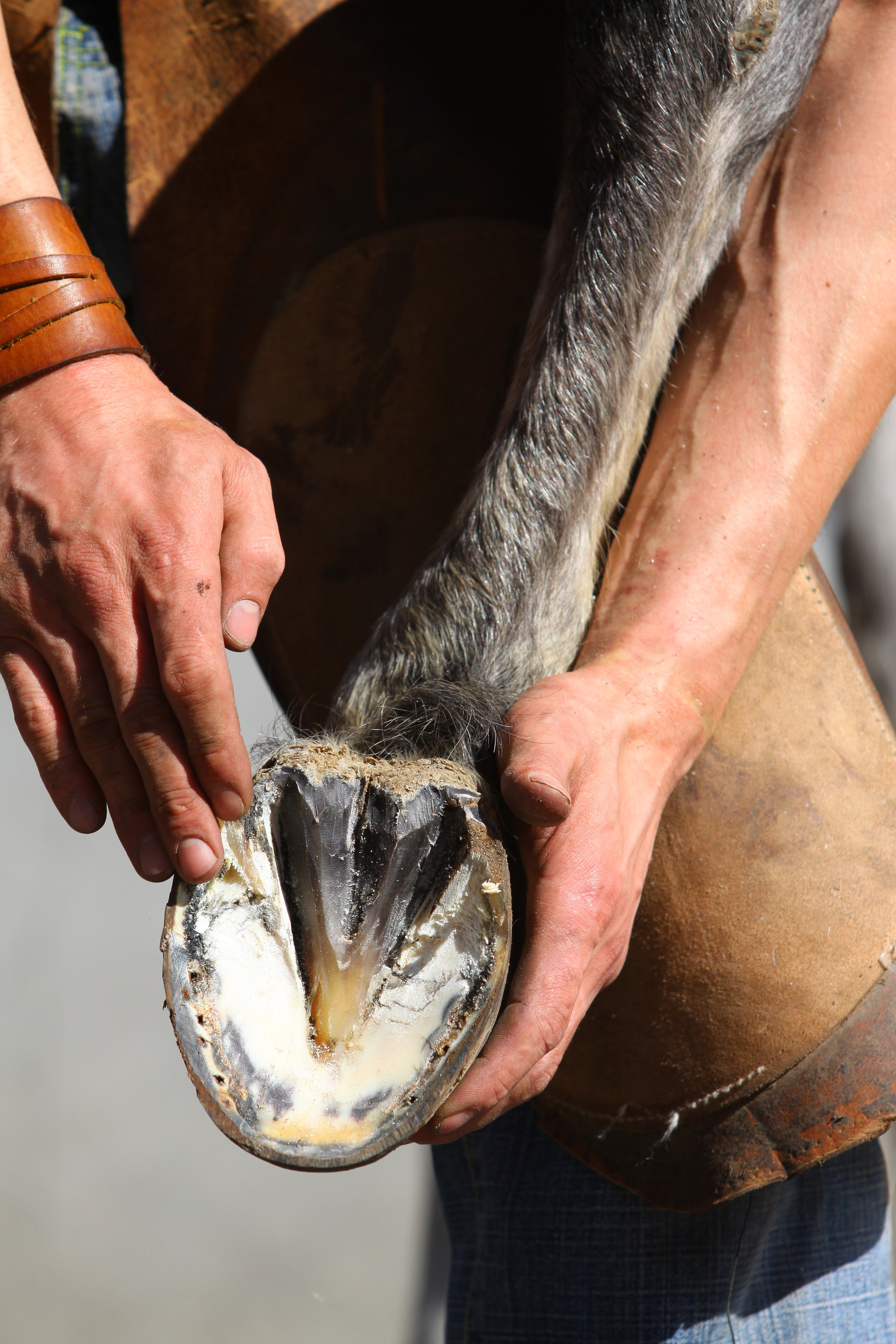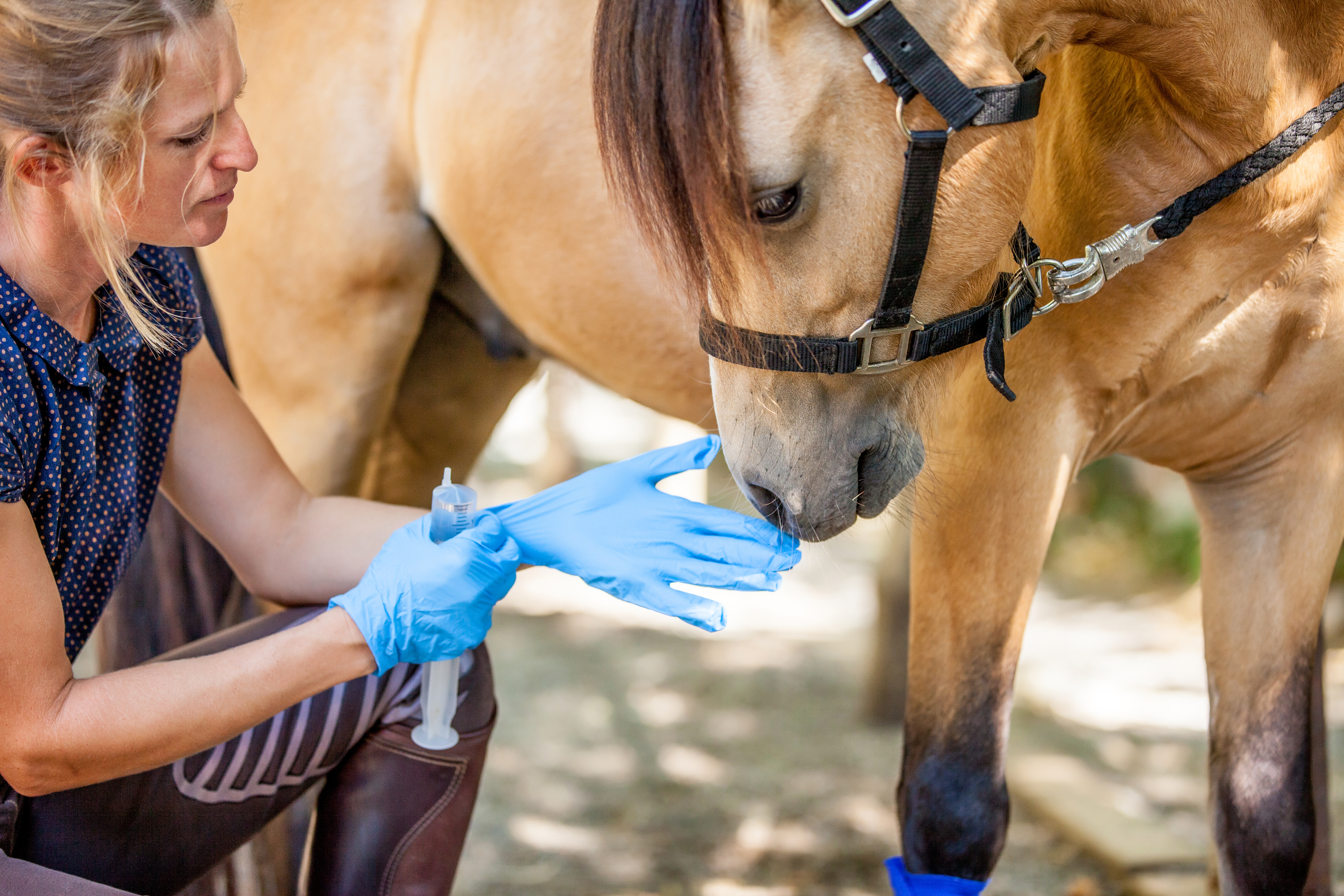Adapted with permission from EQUUS
The arrival of a new horse in your life is always exciting. Acquiring a rescue horse, however, is very different from buying a healthy, sound horse who has had excellent care throughout his life. A rescue horse with an unknown past may behave in surprising ways, and his health may be compromised in ways that can never be fully restored. An owner of a rescued horse recently put it this way, “I guess that is the hard thing about rescue. You never know what is going to happen.” The road ahead may have a few clouds along with that sun, and it may take some unexpected turns.
The American Association of Equine Practitioners (AAEP) has published and regularly updates Care Guidelines for Equine Rescue and Retirement Facilities. These guidelines provide a road map, which veterinarians follow as much as possible. But each rescue horse is unique. You’ll need to be ready to adapt to each horse’s needs and circumstances. Taking on a rescue horse requires patience and dedication, and it can be one of the most rewarding experiences a horse-person can have. Here’s advice for how to begin.
STEP 4: TEACH THE HORSE THREE BASIC SKILLS
A rescue horse can be trained for practically any job or discipline. There’s no reason a rescue can’t trot down the centerline of a dressage arena or win hundreds of thousands in prize money running down cows competitively. Don’t be afraid to dream big. Chasing those dreams, however, starts with baby steps.
I believe every horse must have three skills, regardless of his circumstances: leading, allowing farriery work and accepting injections. And these are the places to begin when working with a rescue horse. If you are unsure of your ability to teach a horse any of these skills, get help from a professional trainer. A horse with a history of neglect and abuse isn’t going to be forgiving of training mistakes and may be extremely reactive. You could put yourself in significant physical danger. If you’ve successfully taught other horses these skills, you’ll use the same basic techniques but with modified expectations and timelines to accommodate the rescue horse’s circumstances.

1. Leading: Every horse needs to learn the ‘go forward’ cue to follow a handler willingly, even in new and scary situations. With a rescue horse, this can be challenging. Some have never had a roof over their heads, so manmade shelter is an entirely new experience. Being in a confined space also takes away the horse’s main defense: to run. Trusting you when that defense is eliminated is a big step for the horse.
When a rescue horse is unwilling to follow you, de-escalate the situation immediately by giving him a moment to consider his options, explore his environment and think about what you are asking. If he’s licking, sniffing, inspecting the ground or pawing, be patient and reward him for his bravery with a scratch on the withers. Remember, you don’t know his whole story or what previous bad experiences he has had. Be patient—incredibly patient—and be prepared for him to advance on his own schedule. If, during the thinking process of going forward into the stocks, trailer or building, a horse is pushed too hard or too fast to go forward, it may accidently “justify” his fears, making it about 1,000 times less likely that he will respond positively to you.

2. Hoof handling: Many horses who come from a background of neglect have not had proper hoof care. This can be due to financial constraints or bad behavior. A thin and weak horse may not be able to balance and support himself for very long when picking up a foot. Whatever the reason for his hoof-handling aversion, gradual work is critical to overcoming it. Always touch a horse on his body and work your way down. If you suddenly touch the lower leg, an automatic nerve reaction can result in sudden movement. This reaction is hardwired into the horse.
When the horse accepts touch, asking him to shift his weight away from the foot you are touching is the next step. Make sure you recognize and reward this when it happens with praise. When you can pick up a foot, do so only for a split second and set it back down before he pulls away.
For your bookshelf:
The Ultimate Guide to Horses in Need
Saving Red: The True Story of a Rescued Horse Turned Rescuer
Changing Horses: One Woman’s Journey through Horse Racing, Horse Rescue, and Horse Reflection
Front feet may be easier to work with than hind feet and you need to always work with your own safety in mind. In the hind limb, staying in a safe position is particularly critical. Here’s how I proceed when I am not sure of how a horse will react:
1. I have a helper hold the horse’s halter and stand on the same side as the foot I am picking up (in this example, the left hind).
2. Standing by the barrel of the horse, I place my left hand on his hip. On a very wary horse, I may start by touching the withers with my left hand and gradually work my way to the hip.
3. Keeping my left hand on the hip, I place my right hand next it then slowly but firmly run it down the leg. If the horse doesn’t pick up his foot from this cue, I can use my left hand (still at the hip, or as near as I can get it while bending over) to shift his weight off the leg. With this hand I can also feel any muscle tightening signalling an adverse reaction.
Remember that this training is for a lifetime. It is more important to go slow and achieve consistency than to achieve a lot in one training session.

3. Tolerating injections: This may not seem like a traditional “training” issue, but many rescue horses have not had routine vaccinations, so they find injections upsetting or even terrifying. This can be a significant problem. Not only are annual vaccinations difficult and dangerous, but if the horse is ever ill, seriously injured or needs sedation, the situation is made that much more difficult. These horses can be difficult to retrain, but it is possible.
Most veterinarians have a system they prefer for handling injection-shy horses. The first step in mine is to ensure that the horse accepts being touched on the muscular region of the neck where injections are administered. It is even better if he will accept mildly unpleasant stimuli, such as a poke of a finger or a pinch. It works like this: rub, rub, rub, pet, pet, pet, poke, treat, treat, rub, rub, pet, pet, pinch, treat, treat. When a horse allows that, I’ll hold the syringe in my hand and do the rub/pet/poke routine, immediately followed by the injection, and then repeat the rub/pet/poke routine again. Afterward, it’s critical to reward the horse with positive reinforcement.
Sometimes, that first injection is a sedative that will also blunt sensation. That allows me to administer the necessary vaccines or draw blood for testing while the horse is more relaxed. It is not ideal to use this for the lifetime of a horse, but I also want to make the experience as positive as possible. I intend to give that horse vaccines and draw blood for Coggins’ testing annually for the rest of his life. I am setting him up for 20 more years of either success or stress and fear. A long-term thought process is important for everything that is done with horses.
Read the rest of this series:
Rescue Rehab Step 1
Rescue Rehab Step 2
Rescue Rehab Step 3
Rescue Rehab Step 4






